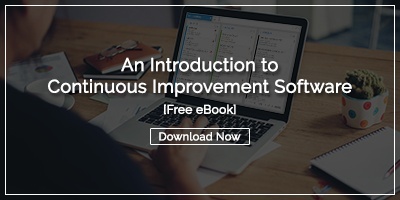 A few years back, Microsoft did some research on the most common uses of Excel. What do you think was the number one thing contained in spreadsheets? Balance sheets? Expense reports? Budget forecasts? No, no, and nope. The number one use for Excel spreadsheets is lists. Although Excel is an extremely sophisticated and flexible application that is really good at doing math, most of the time it is used simply to house a list.
A few years back, Microsoft did some research on the most common uses of Excel. What do you think was the number one thing contained in spreadsheets? Balance sheets? Expense reports? Budget forecasts? No, no, and nope. The number one use for Excel spreadsheets is lists. Although Excel is an extremely sophisticated and flexible application that is really good at doing math, most of the time it is used simply to house a list.
So if you think that Excel is the perfect home for your list of improvement opportunities, we can’t really fault you. Apparently, using Excel for lists is all the rage. But if you are committed to the philosophy of Kaizen and the belief that positive change is always possible, it is a good idea to apply that continuous improvement spirit to the way Kaizen is managed.
A list of improvement ideas can be entered into an Excel spreadsheet for sure, but is that the most effective way to get the change you seek?
The Shortcomings of Excel for Kaizen Management
Here are a few of the reasons that Excel comes up short as a Kaizen management platform.
- Excel is passive:
The application is designed as a repository. Information goes in, but it does not come out in any automated way. If someone wants to see what’s up with a project that is tracked in a spreadsheet, they have to remember to go look. Excel won't remind them to do so. - There is no audit trail:
Sure you can keep a million versions to track progress over time, but that is confusing and introduces untold opportunities for error. If multiple people have access to a spreadsheet, you have no way to tell who changed what when or why. - It is designed for one user at a time:
These days there are some online spreadsheets that allow multiple people to work on the same file at the same time, but even they aren’t easy to use or error free. What if two people try to change the same cell at the same time? Excel was simply never intended as a multi-user tool. - It’s a no-go on mobile:
Have you ever tried to edit a spreadsheet on your iPhone? I didn’t think so. It’s virtually impossible. So what happens to all those great ideas for improvement your team gets while they are out in the field or at home on the weekend? For a lot of organizations, the answer is nothing.
The Alternative
While Excel is an awesome tool for a bunch of business applications, purpose-built Kaizen software is a much better option if you want your continuous improvement activities and culture to thrive. Here’s how it contrasts with Excel.
- It includes active alerts and notifications:
With Kaizen software in place, improvement work doesn’t slip through the cracks. People receive alerts when their attention is required. Managers get notified when progress stalls and everyone can work together to get projects over the finish line. - Every change is documented:
You’ll have a complete historical record of all improvement activities. Leaders have insight into who did what when and why. Reports are available to assess the health of your improvement culture and identify those people who are engaged and effective at creating positive change. - It is designed for use by the entire organization:
Kaizen software is intended to be used by many people at a time, with everyone from the front lines to the c-suite contributing and acting on ideas for improvement. You never need to worry that it is “locked for editing,” and there is always one unified and accessible version of the truth. - Mobile apps increase engagement:
The best solutions are fully compatible with the mobile devices that your team loves. Whether on a smartphone or tablet, they can easily log in, track the progress of projects, contribute new ideas, or document work in progress. Your Kaizen program truly exists everywhere and all the time.
If you are serious about Kaizen, don’t treat it like a list. Instead, give it the support it requires with a solution built to capture, spread, and sustain improvement.



Add a Comment